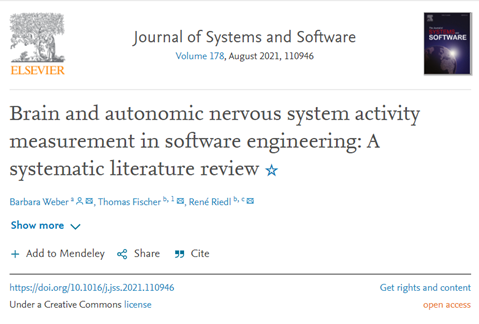Neuroscience measurement methods in software engineering research
Comprehensive literature review published, which gives an overview of the use of measurement methods from Neuroscience in research on Software Engineering

Authors: Barbara Weber (University of St. Gallen), Thomas Fischer, René Riedl
Abstract: In the past decade, brain and autonomic nervous system activity measurement received increasing attention in the study of software engineering (SE). This paper presents a systematic literature review (SLR) to survey the existing NeuroSE literature. Based on a rigorous search protocol, we identified 89 papers (hereafter denoted as NeuroSE papers). We analyzed these papers to develop a comprehensive understanding of who had published NeuroSE research and classified the contributions according to their type. The 47 articles presenting completed empirical research were analyzed in detail. The SLR revealed that the number of authors publishing NeuroSE research is still relatively small. The thematic focus so far has been on code comprehension, while code inspection, programming, and bug fixing have been less frequently studied. NeuroSE publications primarily used methods related to brain activity measurement (particularly fMRI and EEG), while methods related to the measurement of autonomic nervous system activity (e.g., pupil dilation, heart rate, skin conductance) received less attention. We also present details of how the empirical research was conducted, including stimuli and independent and dependent variables, and discuss implications for future research. The body of NeuroSE literature is still small. Yet, high quality contributions exist constituting a valuable basis for future studies.
